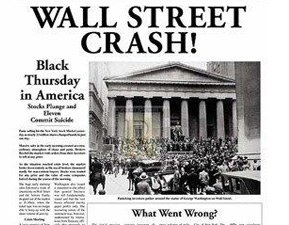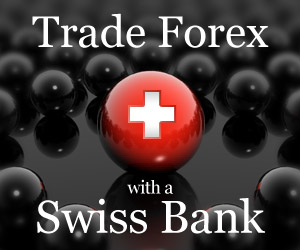Stock Market Crash of 1929 - Learn From the Past
Read about the factors influencing the stock market crash of 1929 and compare that situation with current standings of world economies. Surprised?
Almost every person in developed countries and probably even all over the world has at least heard for stock market crash of 1929. What was it all about to make such a noisy story out of it?
Before the Crash
Well, to keep the long story short, after the First World War United States have enjoyed great economic expansion. In the last three years before the crash the industrial production output has increased by 25% a year. The economic boom was mostly driven by electricity wide spreading and purchases of electrical appliances. The 20s were a great age for most of Americans, often addressed as rebirth of America; people were living in wealth and excess.
Stock market has followed the economic expansion big time. In the last three years before the stock market crash of 1929 major stock market indices raised almost 400%. Everybody was talking about stocks and how easy it is to make a lot of money on the stock exchange. The huge optimism among Americans made them believe that stock market would continue to rise indefinitely. Hundreds of thousands of Americans invested heavily in stocks and a lot of fresh invested money was actually borrowed by brokers and banks. Lending (margin buying) reached about two thirds of the buying value and by August 1929 over $8.5 billion of stocks was bought on loan, which was more than the entire amount of currency circulating in U.S. in those times. The price to earnings ratio, which is often used as basic indicator of how expensive/overbought the stocks are, has far exceeded historical average of around 15 by reaching 32.6 in September 1929 for the S&P Composite Index. The Dow Jones Industrial Average picked on 24th of October at 381.17 points.
Stock Market Crash 1929 Major Events

The stock market collapse started on 24th October (Black Thursday), when trading volume was about three times higher than on normal trading day. This caused the ticker tapes were in nearly 90 minutes delays behind the market. The closing price of Dow Index was around 9% below the closing price of the previous day. Several Wall Street bankers have met to find a solution to prevent panic selling of stocks. They came up with an idea of deliberate buying of large blocks of blue-chip shares, starting with U.S. Steel and others. The success of this strategy was very time limited, because on 28th of October - Black Monday, market felt again on high trading volume by -13%. Black Monday was followed by Black Tuesday, the day which most historians agree to represent the starting point of Great Depression, a 12-year era that affected Western industrialized countries and did not end until the beginning of World War II. Ticker tape machines had a 3 hours delay on Black Tuesday, trading volume has reached a record of 16.4 million shares traded, and panic selling caused the Dow Jones Index to finish -12% lower than the day before.
After the Crash
With some bear market rally periods in between, the stock market continued declining until July 1932, when Dow had bottomed by 41 points. This was nearly 90% drop from the 381 high in 1929. It took the market 22 years before it reached the nominal levels already seen in 1929, but if speaking in real terms, anyone who bought stocks just before the market crash in 1929 and held them afterwards, did never get back to even because of life pass.
An important action after studying the crash was a Glass-Steagall Act which passed the U.S. Senate in 1933. This act has mandated a separation between commercial banks lending the money to the people and investment banks, which are involved in securities business.
What Caused the Crash?
Economists are not uniform in explaining the reasons for the crash. Not all of them believe that stocks were in a bubble that time, since they have merely tracked the expected rise in dividend payouts in rapid economic expansion. Although, there were also some warnings coming out before the stock market crash of 1929 that stocks are expensive and correction is expectable after 6 year of continual growth. After the crash people went from over optimism to over pessimism about the economic outlook, they decreased spending sharply and companies were hit hard by this trend for years. Many economists believe that this should be just normal economic cycle, but the panic and mass psychology among people brought it to historic extremes.
Written by: Goran Dolenc
Do you find this content useful? Like! Tweet! Recommend! Share!
Back from Stock Market Crash of 1929 to Stock Market Basics
Back from Stock Market Crash of 1929 to Best Online Trading Site for Beginners home page







